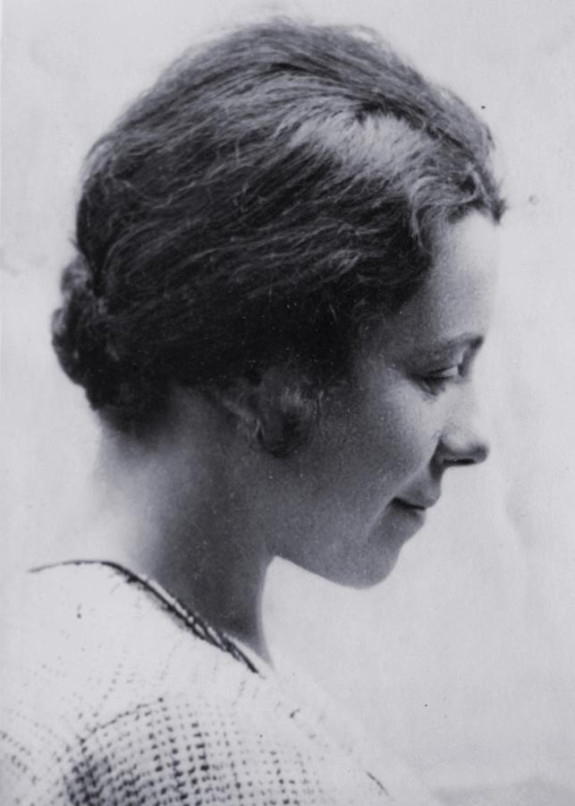Highly talented but unwanted
Erika Sinauer
- * 15.6.1896 in Freiburg im Breisgau
- ✝ [presumably] 1942 in the concentration camp Auschwitz-Birkenau
Erika Sinauer followed in the footsteps of her father, Moritz Sinauer, a well-known Jewish lawyer, studying law in Freiburg and gaining admission to the bar as a practicing lawyer in 1927. In 1928, she completed her doctoral degree under Prof. Claudius Freiherr von Schwerin with an outstanding study on the „Schlüssel des Sächsischen Landrechts“, a systematic arrangement of Saxonian common law. In 1929, Sinauer began work as von Schwerin‘s assistent at the institute for legal history at the University of Freiburg preparing an edition of the corpus of Saxonian common law in the Sachsenspiegel and the gloss of Johann von Buch on behalf of the MGH. The Sachsenspiegel, a 13th century codification of Saxonian legal statutes, covers both common and feudal law, the common law elements of which were first commented by Johann von Buch ca. 1325. Both texts are considered as outstanding sources of Medieval legal history, see: Frank-Michael Kaufmann, Peter Neumeister: Wege zur Edition der Sachsenspiegelglosse-Landrecht des Johann von Buch, in: Denkströme. Journal der Sächsischen Akademie der Wissenschaften, Heft 5 (2010).
After the death of her father, Erika Sinauer took over his legal practice in Freiburg in 1930, while also continuing work on her post-doctoral thesis on the origins of the Sachsenspiegel-gloss. This was the subject of her groundbreaking article „Studien zur Entstehung der Sachsenspiegelglosse“, in which, among other things, she established the Codex Hecht in Berlin as a suitable reference manuscript for a future edition of the gloss. Although Erika Sinauer was thus well qualified for the work and well on the way to preparing the edition, the MGH and her supervisor, von Schwerin, progressively distanced themselves from her after the publication of the so-called „Gesetz zur Wiederherstellung des Berufsbeamtentums“ (law for the restoration of the professional civil service) on 7 April 1933 demanding the demission of Jewish staff from public service.
In his 2002 edition of von Buch’s Sachsenspiegel commentary, Dr Frank-Michael Kaufmann explicitly points out his indebtedness to Sinauer’s clear analysis and her valuable preliminary work, in particular her identification of the Codex Hecht as the reference manuscript for the edition. By contrast, von Schwerin’s overdimensional editorial concepts that were adopted by Sinauer’s successor, Dr Helene Bindewald, had effectively worked to hinder the publication of a usable edition of the Sachsenspiegel-gloss of Johann von Buch until the end of the 20th century.
Erika Sinauer was deported from Freiburg to the French detention camp Gurs in the Pyrenees in October 1940 and from there to the infamous internment camp Drancy near Paris, an assembly camp on the way to the concentration camps in the east. Her name is listed among those transported on 2 September 1942 from Drancy to Auschwitz-Birkenau, where she was murdered at an unknown date. In 1952, Erika Sinauer was officially declared dead and her date of death set at 8 March 1945.
MGH editions
- Vorarbeiten zu: Glossen zum Sachsenspiegel-Landrecht. Buch'sche Glosse I-III, hg. von Frank-Michael Kaufmann (MGH Fontes iuris N. S. 7), Hannover 2002
Other publications
- Der Schlüssel des Sächsischen Landrechts. Breslau 1928
- Eine Lüneburger Sachsenspiegelhandschrift, in: ZRG Germ. 45 (1925) pp. 408–413
- Studien zur Entstehung der Sachsenspiegelglosse, in: NA 50 (1935) pp. 475–581
Reference literature on Erika Sinauer



